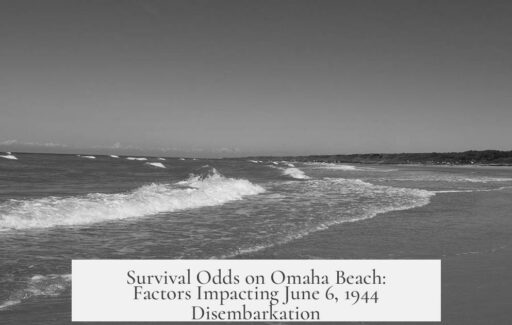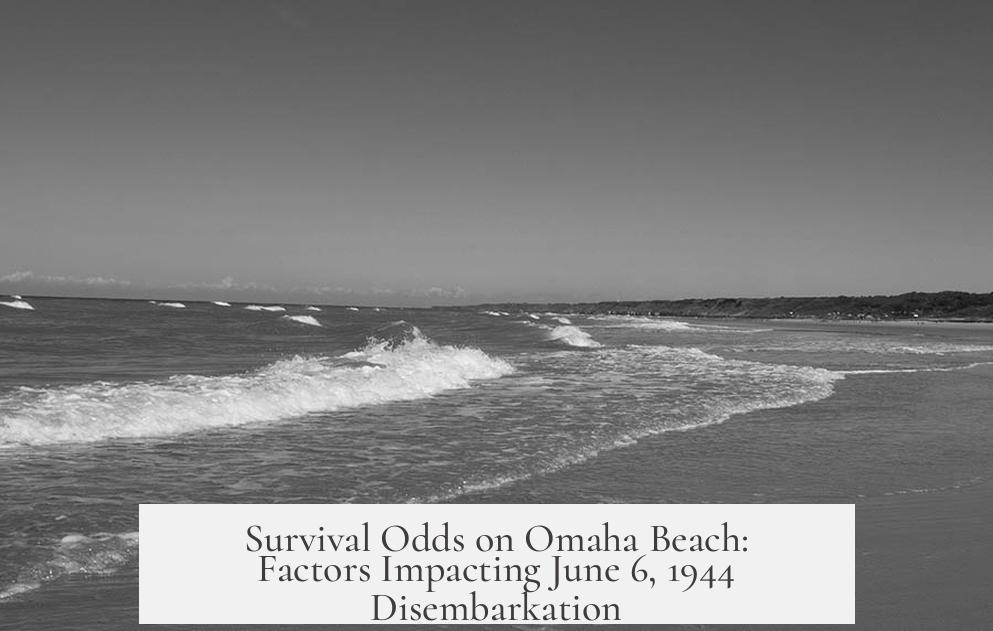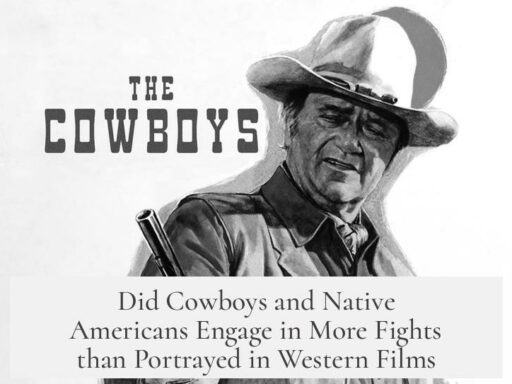The chances of survival for soldiers disembarking on Omaha Beach on June 6, 1944, were largely determined by the extreme casualty rates, the open terrain, and the loss of leadership within the first critical minutes of the assault.
The terrain at Omaha Beach was wide and exposed. This openness prevented effective cover and made soldiers vulnerable to enemy fire. The primary survival strategy was to move quickly out of this open area to any available cover. Slower movement or delays significantly lowered survival chances.
Casualty rates during the initial phase were extremely high. For example, Company A of the 116th Regimental Combat Team from the 29th Infantry Division suffered about a 66% casualty rate within the first 15 minutes after landing. This means roughly two-thirds of the soldiers were killed or wounded early, severely affecting the unit’s combat effectiveness. Leadership was also hit hard, with most senior officers dead or seriously wounded, reducing coordinated defense and further risking soldiers’ lives.
Other units experienced similarly high losses. A Ranger company that landed nearby suffered around a 55% casualty rate by the time it reached the cliff base. Subsequent units reported casualty rates up to 50%, reflecting the consistent danger across the beach.
Aside from terrain and immediate losses, combat conditions had many unpredictable variables. Yet, these high casualty rates offer concrete statistics on survival odds. The loss of leadership and inability to find cover increased vulnerability. These factors combined meant that survival was as much a matter of rapid movement and luck as of skill and leadership.
- Open terrain on Omaha Beach exposed soldiers to heavy enemy fire.
- Casualty rates for first-wave units ranged from 50% to 100%, with some units experiencing two-thirds casualties within 15 minutes.
- Loss of senior leadership reduced unit coordination and increased vulnerability.
- Units like the 116th RCT and nearby Rangers faced severe combat losses quickly.
- Quick movement off the beach was essential but did not guarantee survival.
How Were Your Chances of Survival Determined Disembarking on Omaha Beach on June 6, 1944?
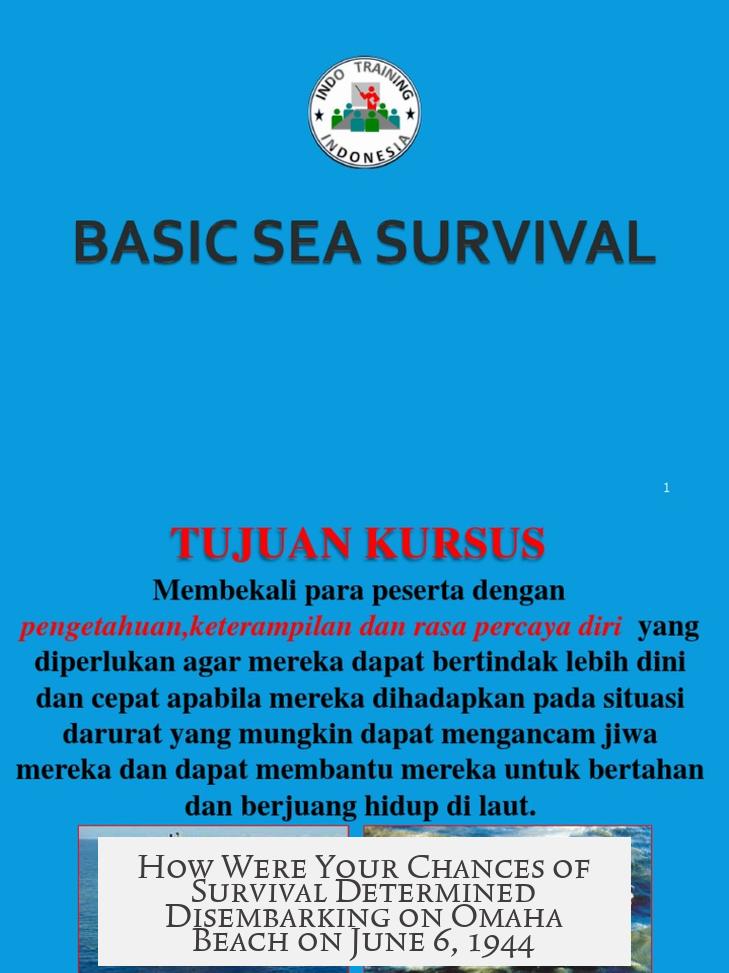
Your chances of survival landing on Omaha Beach during the first wave of D-Day hinges on brutal numbers and harsh realities. The battlefield was a brutal place where luck, terrain, and sudden chaos played significant roles. To truly understand the odds, you need to look deep into the factors that shaped this deadly moment in history.
So, how deadly was it really? Imagine stepping off the landing craft into open, enemy-fire-filled ground. That’s the core of Omaha Beach’s lethal reputation. It’s not just about skill or leadership; it’s about an open stretch exposed to relentless German firepower. Simply put, the battlefield was a wide-open kill zone.
Open Terrain: Your Worst Enemy
One of the most critical factors influencing survival was the openness of Omaha Beach. Picture this: soldiers coming ashore and immediately facing sweeping machine-gun fire, snipers, and artillery blasts with little cover.
Getting out of that open terrain quickly was literally the best move to stay alive. Any delay meant becoming easy targets for enemy gunners. Unlike battles in dense forests or urban ruins, Omaha offered almost no natural shelter. It was like trying to sprint across a spotlight in a dark room bristling with sharpshooters. Not great odds, huh?
Casualty Rates Paint a Grim Picture
Numbers from the units involved provide a cold, mathematical glimpse of survival chances. The 116th Regimental Combat Team (RCT), part of the 29th Infantry Division, faced some of the fiercest firepower.
- Company A of the 116th RCT: After just 15 minutes of landing, casualty rates soared to about 66%. That means two-thirds of the soldiers were either wounded or killed. Imagine 100 men stepping off the boat and 66 being taken out so quickly.
- Leadership Loss: On top of this, most senior leaders in the 116th were dead or incapacitated early on. This chaos further slashed the unit’s ability to organize and fight back, making survival even harder.
Nearby, a Ranger Company landing alongside experienced similar carnage. Their casualty rate reached about 55% by the time they hit the base of the cliffs that lined the beach. These cliffs were a death trap funneling men into narrow, lethal choke points.
Other supporting units landing in subsequent waves also reported casualty rates up to 50%. These numbers aren’t just statistics—they reflect a battlefield where survival odds were stacked steeply against the men.
Combat Variables: More Than Just Numbers
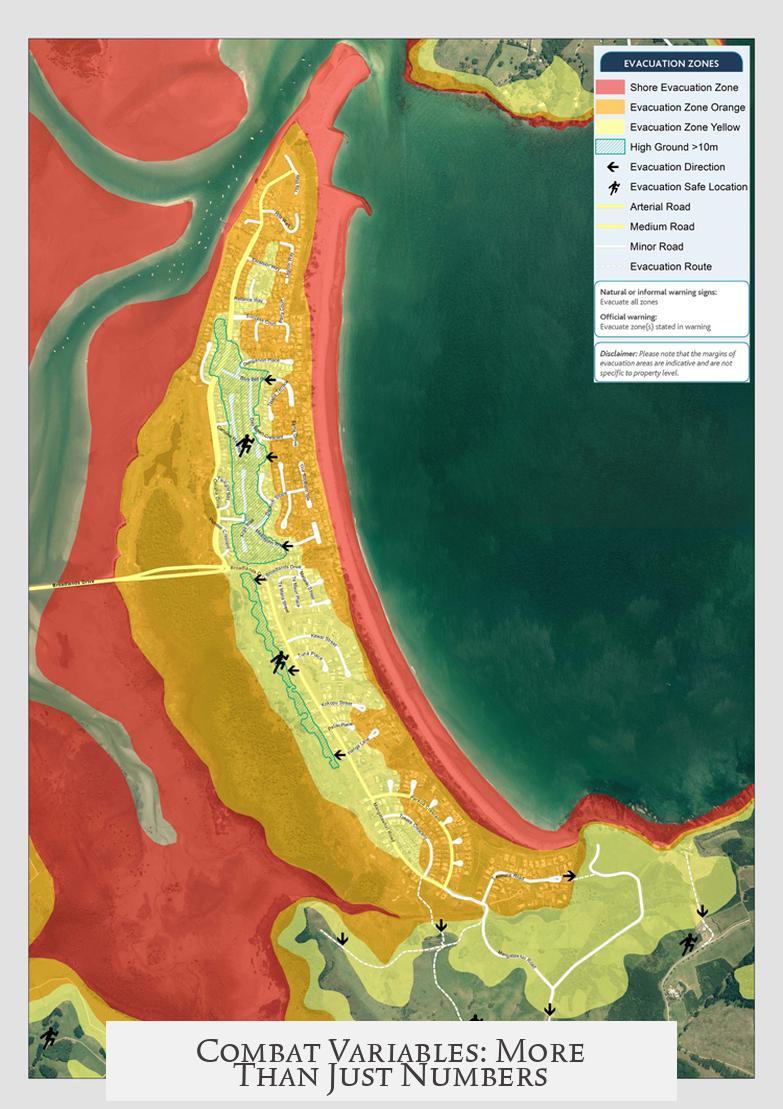
So, what else played into this deadly lottery besides terrain and sheer firepower? Multiple variables influenced survival chances:
- Leadership and Skill: While crucial, even the best leadership couldn’t change the raw risk posed by open fields and relentless enemy fire.
- Timing and Landing Spot: The exact point of landing mattered. Splashing down near heavy fortifications or mines sharply increased danger.
- Morale and Training: These helped with quick decision-making under pressure, such as finding cover. But with so much chaos, even well-trained soldiers struggled.
It’s fascinating and sobering. You can prepare perfectly, but the open terrain and intense initial bombardment often rendered all tactics partially moot. Survival was a blend of skill, timing, and a hefty dose of luck.
A Personal Look: What Would You Do?
Picture yourself standing on that landing craft, heart pounding, hearing artillery and machine guns cracking all around. Your boat hits the water. Do you rush forward hoping to find cover? Do you crawl in the sand hoping to avoid the hailstorm of bullets?
Thousands faced that dreadful choice. Their survival was brief or extended by split-second decisions, the terrain itself, and sheer randomness. The fact that casualty rates climbed so quickly for initial units proves how fragile any chance of survival was on Omaha Beach.
Why Does This Matter Today?
Understanding how survival chances were determined on Omaha Beach reveals how brutal the battle really was and how those soldiers faced a near-impossible task.
It forces us to appreciate the courage behind those faces in the photographs and the lessons about combat risk and terrain importance.
More importantly, it frames survival not just as a matter of fighting skill, but as a mix of environment, fate, and the tenacity of those men under fire.
Summary: Your Odds Versus Obvious Danger
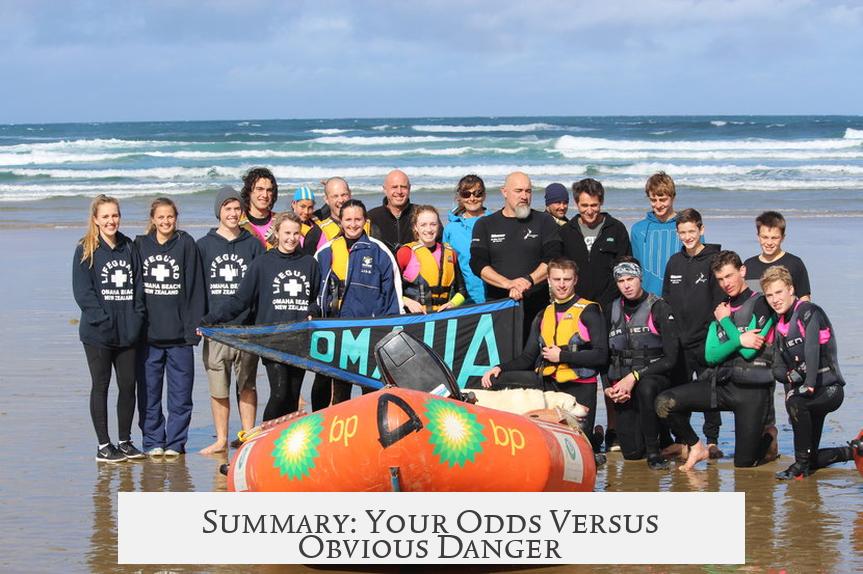
- Extreme casualty rates (~30-100%) within the first 15 minutes define survival odds.
- The beach’s open terrain exposed soldiers to heavy fire, sharply decreasing survival chances.
- Early loss of leadership severely damaged units’ ability to coordinate, worsening their fate.
- Different units had varying, but overall very high casualty rates, highlighting the peril during the initial assault.
In final thought, if survival on Omaha Beach was a math problem, then the equation was ruthless: open ground + heavy enemy fire + broken leadership = low survival rates. But through that chaos, countless acts of bravery and resilience shone through. That’s what D-Day truly honors.
